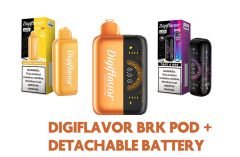Table of Contents [show]
Youde iGo
Introduction
IMPORTANT NOTE: You MUST USE CAUTION when working with rebuildable atomizers. These devices are for EXPERIENCED vapers and require the use of both small, non-powered hand tools as well as an Ohm meter. CARELESSNESS WITH and MISUSE OF rebuildable atomizers can lead to SERIOUS CONSEQUENCES.
![]() Rebuildable atomizers are one of the most advanced areas of vaping I can think of. Because of this fact, the very concept of the RDA can be immensely intimidating to new or casual vapers. But once you’ve built your first stable coil and vaped from one of these little beasties, you may find that you’ve turned a corner in your vaping adventure, one from which there’s just no going back.
Rebuildable atomizers are one of the most advanced areas of vaping I can think of. Because of this fact, the very concept of the RDA can be immensely intimidating to new or casual vapers. But once you’ve built your first stable coil and vaped from one of these little beasties, you may find that you’ve turned a corner in your vaping adventure, one from which there’s just no going back.
The vapor output, throat hit, and flavor produced by RDAs is really something special, unmatched by anything else. Add to that the pride you feel when you do something that, when you first started, you thought would always be way outside your reach, and it all adds up to an amazing experience.
I have two contenders in front of me from Youde’s iGo lineup — and while both are laid out for quad-coil setups, they also are easy enough to build in single-coil or dual-coil style. That’s how I equipped both of them for review, each with dual 1.5 ohm microcoils sporting Ekowool wick and 30-gauge Kanthal stainless steel wire. The reason I didn’t build out quad coils on each device is twofold: First, I personally lack the fine manual dexterity and visual acuity required to install four coils in such a small space as an RDA deck. Second, I actually lost one of the negative posts on the first device trying to build a quad-coil setup despite that personal deficiency.
Since I could then only build a dual-coil on that device, I stuck to dual-coil for both devices to keep the performance evaluation fair.
Let’s get started with the iGo-W2.
The Youde iGo-W2
Build Quality
The first up to bat, the Youde iGo-W2 sports stainless steel construction including the top cap along with great airflow thanks to a pair of 3 airflow holes on each side of the top cap.
However, the design of the W2 reflects a… curious design choice.
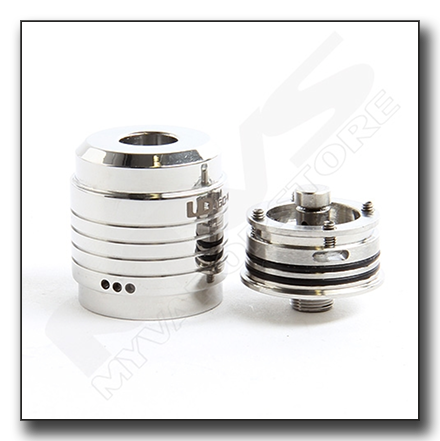 The W2 is designed to accommodate dual- or quad-coil setups, employing a thumbscrew on the center post. This was a good choice. Very nice. However, there are no posts, properly speaking, other than that center post.
The W2 is designed to accommodate dual- or quad-coil setups, employing a thumbscrew on the center post. This was a good choice. Very nice. However, there are no posts, properly speaking, other than that center post.
The “negative posts” actually consist of four Allen screws arranged in the rim of the deck. Here’s why that’s a problem: If you accidentally drop and lose one of those screws — as I did while trying to complete a build on the thing — your RDA just lost quad-coil capability. This particular design element was a bad choice.
While I understand — from both science and the arts — that the very best ideas sometimes arise from some of the very worst ideas, those ‘worst ideas’ usually don’t see the light of day themselves. My thinking is that the “Allen screws as negative posts” idea should have been one of those.
Ease Of Use
Moving on to the question of how easy the W2 is to build for… in my experience, it’s not. Granted, maybe I’m just doing it wrong — but there we have another issue. If my style of installing coils has to be radically different in order to work with the W2, then the W2 isn’t built for people who do it the way I do it. And I learned to do it by watching other vapers build and install coils, as I’m sure is the case for most vapers.
What that means is that the W2 is laid out in such a way that most vapers would have to learn to install their coils in a way that’s radically different from the way they learned to do it. That’s just not good design, in my opinion — and that opinion is reinforced by the fact that the W2 is the only RDA I’ve ever seen laid out this way.
Even its immediate successor was designed more conventionally, which tells me that even Youde knew how unconventional the W2’s design is and actually backtracked from it.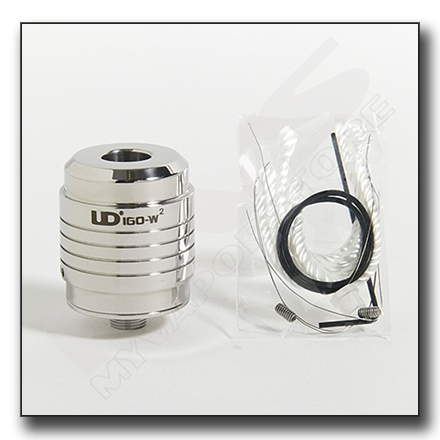
With all that said, I was able, after a whole lot of swearing and fumbling and dropping the atty (and one of its “posts”) to install first a single coil, and then a dual coil, arrangement on it. This brings us to performance.
Performance
The performance of the W2 is, to me, a bittersweet experience. Why? Because, once you have your coil(s) installed, the iGo-W2 is an absolute dream. With dual coils reading a resistance of 0.75 ohms, and with the airflow adjusted properly, the iGo-W2 produces ridiculously thick and luxurious plumes of fragrant vapor.
Beyond the visual vapor output, throat hit gives you a good, solid thump — with the right eliquid, of course. But it’s in flavor that the combination of Ekowool wick, dual microcoils, and the airflow afforded by the W2 really just lights up your senses, and lights up my face with a huge, goofy grin.
I’ve spent a whole two days now vaping Vaporetti’s “Como Caramel” (Dave, a link to the review there, please) from the iGo-W2, and it has just been absolute, sinfully decadent bliss.
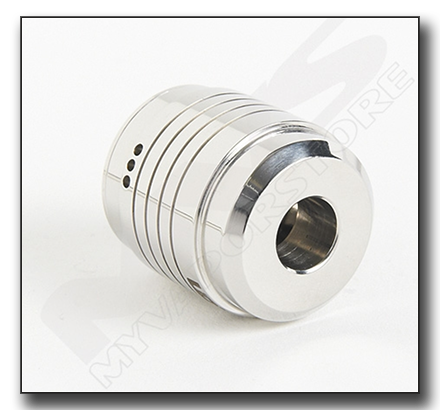 Overall
Overall
Overall, though, I don’t believe I’d recommend the iGo-W2. Although its performance is stellar, its design is simply too unconventional and, most troubling of all, it is dependent for its “posts” on Allen screws, which seem to have been invented for the purpose of being dropped and lost.
While these tiny stress-inducing things are enough of a pain when all they do is secure an RDA’s posts, nobody is done any favors with a device where they are the posts.
The Youde iGo-W3
Build Quality
Now let’s contrast the W2 with its immediate successor, the W3. The improvement in design is evident even before you lift the top cap: taking a look at that top cap, giving it a little twist, we can see that the airflow control of the W3 has been expanded.
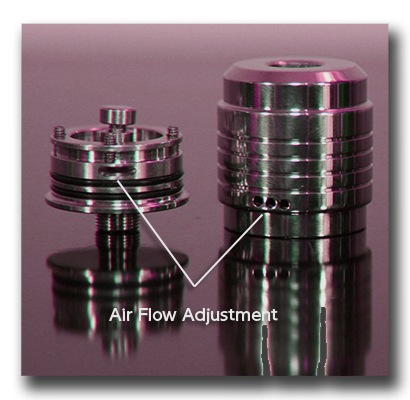 Joining the three round airflow ports that were on the top cap of the W2, the W3’s top cap also boasts an elongated port which enables you to open the airflow all the way up. You’ll see where this is useful in the Performance section, but for now, it’s sufficient to tell you that this can offer an extreme boost in performance under certain circumstances.
Joining the three round airflow ports that were on the top cap of the W2, the W3’s top cap also boasts an elongated port which enables you to open the airflow all the way up. You’ll see where this is useful in the Performance section, but for now, it’s sufficient to tell you that this can offer an extreme boost in performance under certain circumstances.
The top cap here is also stainless steel, relatively thick and heavy compared to other RDAs I’ve handled.
A real comfort of the W3’s design and build for me, though, is that it shows a return to a more conventional post layout, and the posts are all secured via the more usual Philips screws. The difference is tangible, especially for a butterfingers like me — if I drop a Philips head screw, it’s a lot easier to find again than an Allen screw. But because of its shape, it’s actually easier to not drop in the first place.
The more conventional layout is also better in that there’s less chance that just half a millimeter of excess wire in any of the negative posts is going to make contact with the top cap and cause a short. That is so extremely important.
Ease Of Use
While it is — like all quad-coil-capable rebuildables — an example of extremely tight space, the iGo-W3 seemed to me to be much easier to work with when installing a dual coil arrangement than other dual-coil or quad-coil RDAs I’ve used.
I believe this is due to the layout — with most dual-coil-only RDAs spacing their positive and negative posts extremely tightly, it makes for much less space to maneuver one’s fingers in, overall. However, with a quad-coil layout, the posts are spaced a bit farther apart, giving big, not-terribly-dextrous fingers like mine more room to work in.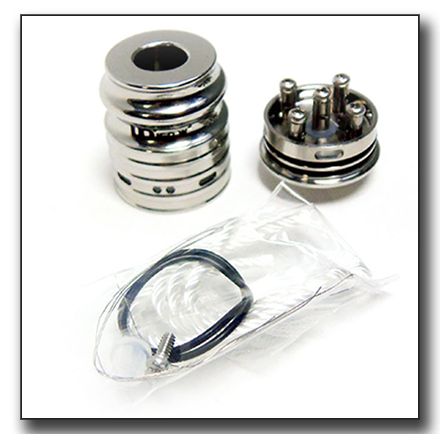
Performance
Where the iGo-W3 just blows me away is its performance. Due to the expanded airflow control options, there is a marked increase in vapor — or in flavor and throat hit — depending on whether you have the airflow opened all the way or have dialed it down to just one small hole for each coil.
Even to an extent regardless of where you dial the airflow to, all three of these major qualities of the vape are simply outstanding on the W3. This device does what rebuildable dripping atomizers are made to do: it just delivers, and in spades.
Overall
Overall, the iGo-W3 is an excellent piece of kit at a price I haven’t seen anyone beat, for what it is — a well built quad-coil rebuildable dripper with airflow control.
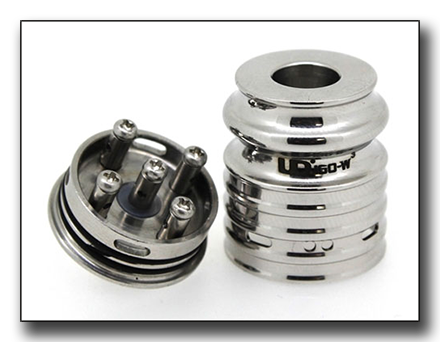 Conclusion
Conclusion
Looking at the pair of these devices side by side, the iGo-W2 and iGo-W3, I get the sense that I’m looking at a design narrative. It’s what I would imagine it would look like to stand in front of a pair of Ford Mustangs, one circa 1980 and the other circa 2014. While the actual performance of the two machines are roughly comparable, the design lines are just barely similar enough to inform you that you’re seeing two examples in a design progression.
Would I recommend an iGo-W2? Hate to say it, but no, I would not. While it’s a winner on performance, its design flaws are fatal flaws, in my opinion. Would I recommend the iGo-W3? To an experienced vaper, you bet I would. But to someone just looking to build their very first coil? Probably not, no. For the very-first-timer, I’ll be offering a review in the very near future of what, to my mind, is the friendliest rebuildable for someone just getting started.
But for your first dual-coil or quad-coil rebuildable, the Youde iGo-W3 gets my personal recommendation.


